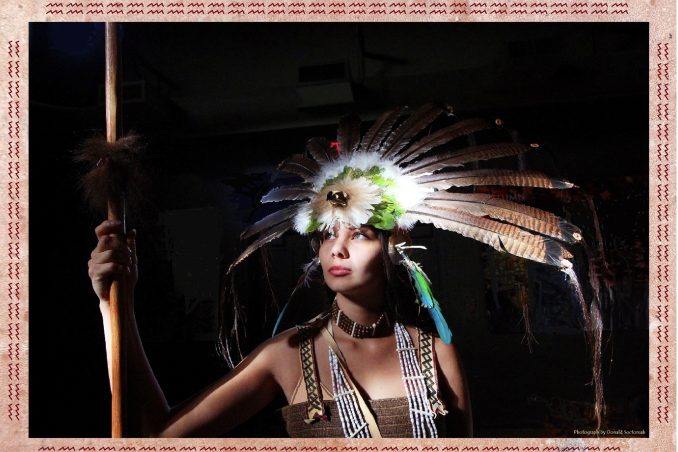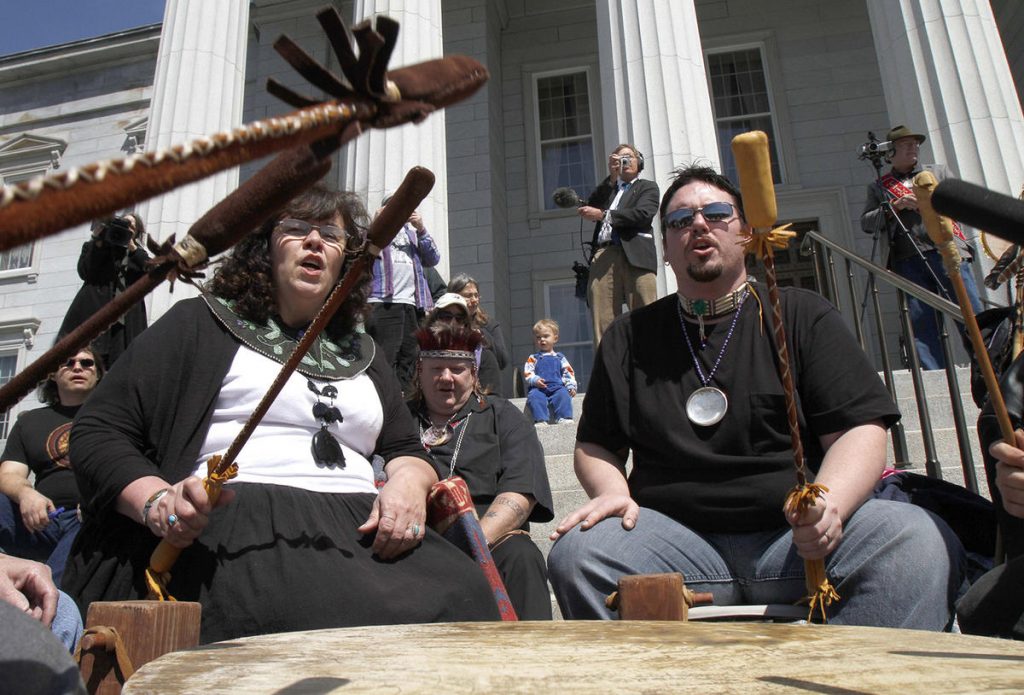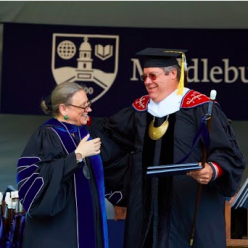by Bailey Walker ‘24.5 and Robin Potter ‘24.5

The history of a people and how it is told, is a defining feature of their identity. From communal creation stories to the personal stories of a relative, our understanding of the past and our place within it creates the foundations for community and sense of self. Tragically, because of this deep connection to identity, the erasure of Native history has historically been used by Anglo colonists as a means to attempt the physical erasure of Indigenous presence. Despite decades of erasure from the story and being considered extinct by the state of Vermont, Abenaki history and presence have remained strong.
Indigenous history has persisted in many different ways throughout time, from oral tradition to academic publishing. For many Indigenous historians the academic realm lends itself to a wider audience through its mainstream acceptance while others choose to tell their people’s stories through artistic means, in keeping with more traditional methods of history-telling. Acclaimed and prolific Abenaki storyteller and citizen of the Nulhegan Abenaki Tribe, Joseph Bruchac combines traditional storytelling methods with historical facts throughout his work, including his novel The Winter People. While the main character Saxo and the story itself are fictional, many of the historical events and even some of the characters are based in truth. Through this retelling Bruchac focuses on the “untold or misinterpreted events of history” because “things are so often only heard from one side,” (Bruchac 163). The Winter People and much of Bruchac’s work resemble a more traditional way of telling history through stories.
Through the more academic style of his work, Dr. Frederick Wiseman, member of the Missisquoi Abenaki, has provided strong and irrefutable evidence of the tribe’s continued existence in Vermont and focused on expanding knowledge about the actions taken by the Abenaki in their own history. In his history of the European discovery of Lake Champlain, At Lake Between: The Great Council Fire, Wiseman looks “at this event anew” from the principle that “the indigenous histories and perspectives of non-Iroquoian peoples of the Northeast deserve as much attention by historians and anthropologists,” (Wiseman 3). In both these examples and countless others, Abenaki scholars redefine and continue the historical roots of their people, both to strengthen their own identity and include native voices in the public discourse.
Although Abenaki history has been passed down orally through generations for thousands of years (The UVM PLACE Program), it has been omitted from the dominant narrative. This erasure of narrative, favored by colonists, has oppressed the Abenaki for hundreds of years. It is commonly believed that the Abenaki no longer exist in Vermont and have migrated elsewhere or dissipated out of existence. In fact, they were considered legally extinct until the beginning of the 21st century (“Vermont’s Native Americans”). In 2011 and 2012, however, after years of lobbying by Abenaki leaders, the Elnu Tribe of the Abenaki and the Nulhegan Band of the Coosuk Abenaki Nation and the Abenaki Nation of Missisquoi and the Ko’asek Band of the Sovereign Abenaki Nation, respectively, were legally recognized by the state of Vermont as indigenous tribes (“Vermont’s Native Americans”). To gain this legal status, the Abenaki needed to prove the legitimacy of their history to the state government of Vermont, a process in which both Bruchac and Wiseman were involved. In an effort to enhance and preserve their culture, the Abenaki were forced to comply with the dominant colonial structures, deviating from their tradition of oral history and storytelling.

CREDIT TOBY TALBOT / AP FILE
Legal recognition was a huge step in asserting the presence of Abenaki within the state of Vermont. Since colonization, the Abenaki have been forced to live and operate within government systems in both Canada and the United States that were constructed without their consent or input and actively oppressed them by denying their existence. The legal recognition of the tribes works to strengthen cooperation between the Abenaki and the government of Vermont and act as a platform for future dialogue. This platform is only the beginning. Hopefully legal recognition will improve Abenaki representation in education and pop culture.
The history of the Abenaki is fraught with erasure and oppression. However, it is also a history of resilience and survival (“Vermont’s Native Americans”). In the spirit of Tuhiwai Smith’s Project of Survivance, the Abenaki continue to gather to observe traditions, celebrate art and culture, and tell stories, as they always have done (Tuhiwai Smith). They aim for further sovereignty, and economic development (“The Vermont Abenaki”). For now, they are forced to navigate a delicate balance between preserving old traditions and coexisting with new structures. Through the hard work of preservation and continuance of many Abenaki leaders, in both traditional and legal frameworks, the tribes have gained a stronger sense of historical identity and recognition in Vermont.
Further Reading:
Decolonizing Through History Telling
The Survivance of the Western Abenaki in Vermont
Works Cited
Bruchac, Joseph. The Winter People. Puffin Books, 2004.
The UVM PLACE Program. https://www.uvm.edu/place/towns/greensborobend/abenaki.php. Accessed 28 May 2021.
“The Vermont Abenaki: A Struggle for Recognition.” Video, 0:21:44. Town Meeting TV. January 1, 2013. Accessed April 28, 2021. https://www.cctv.org/watch-tv/programs/vermont-abenaki-struggle-recognition?fbclid=IwAR2-zKnQ-VNkdaZ2_zF9f9m5wogStcELOSe1XnuEtQ6Poj2u1wZKVt _gWQ.
Tuhiwai Smith, Linda. Decolonizing Methodologies: Research and Indigenous Peoples. Zed, 2012.
“Vermont’s Native Americans.” YouTube, uploaded by Vote For Vermont, 15 Aug. 2018, youtu.be/fZ7Gih5s4ao. Accessed 28 Apr. 2021.Wiseman, Frederick Matthew. At Lake Between: The Great Council Fire and the European Discovery of Lake Champlain. Lake Champlain Maritime Museum, 2009.
